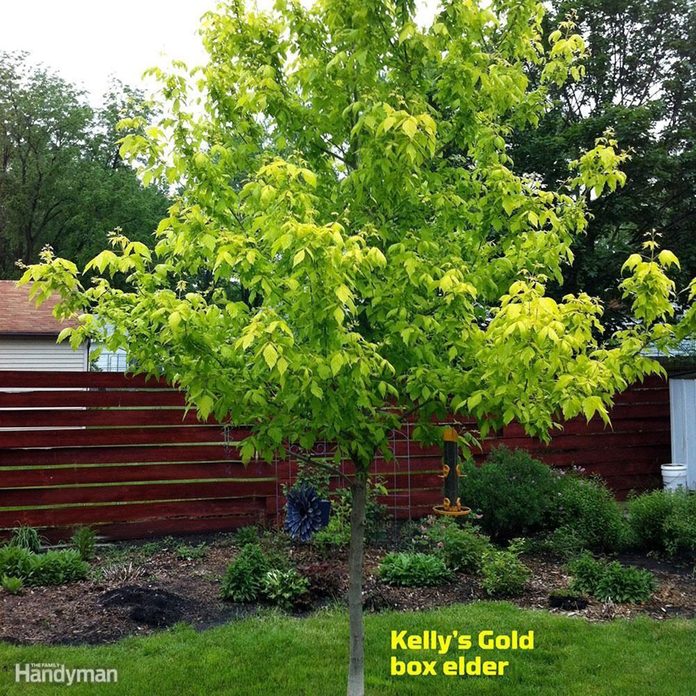
Good Front Yard Trees: Box Elder
Forget what you’ve heard about boxelder trees (Acer negundo) being weed trees. ‘Kelly’s Gold’ is reason enough to grow this tough, undemanding maple. It starts out with yellow spring foliage, maturing to chartreuse, so it makes a fine focal point or small shade tree. ‘Kelly’s Gold’ grows quickly and reaches about 30-40 feet in height. It is hardy in Zones 5-8.
Be sure to plant your new tree correctly. Here’s how.
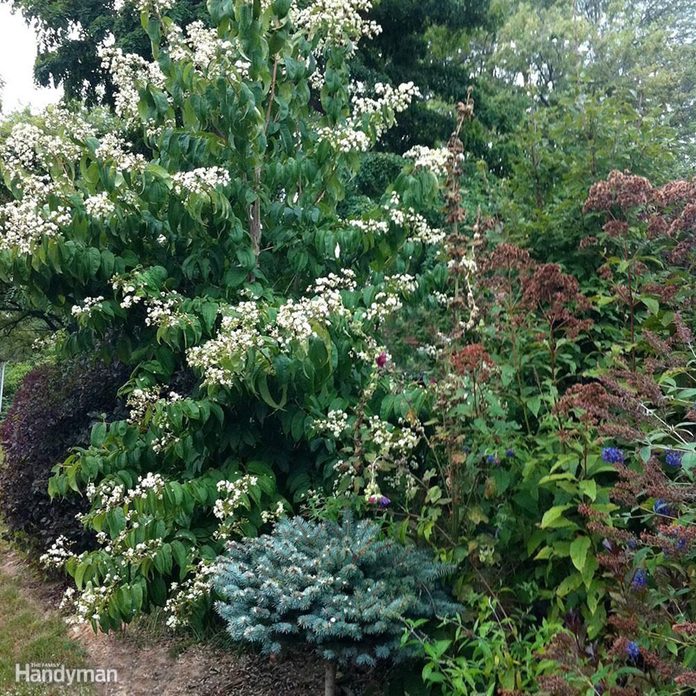
Best Trees for Backyard: Seven-Son Flower
If you haven’t heard of seven-son flower tree (Heptacodium miconioides) before, you’re not alone. But you’ll want to consider it for your yard. It is a true four-season star, with an intriguing shape and peeling bark all year round. In late summer, when few other trees or shrubs are blooming, it puts out large white flower panicles. About a month later, the remaining flower sepals turn bright red. Seven-son flower grows about 20 feet tall and 10-15 feet wide. It is hardy in Zones 5-8.
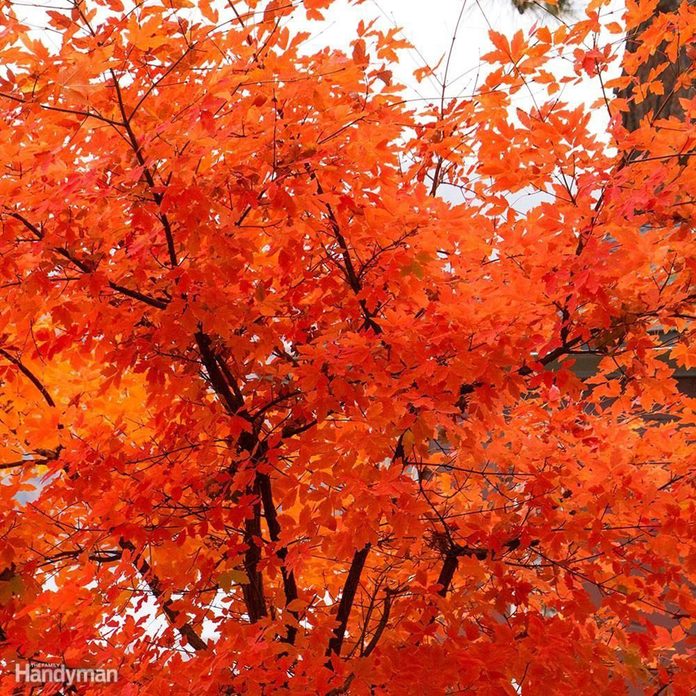
Good Front Yard Trees: Paperbark Maple
There are so many great maples—sugars and reds and Japanese—that it can be hard to pick one. Paperbark maple (Acer griseum) makes that a little easier. If its trademark copper-color peeling bark doesn’t bring enough joy all year round, it also has attractive foliage during the growing season and bright scarlet fall color. Paperbark maple grows slowly to 25 feet tall, 15-20 feet wide, with an open habit that improves with age. It’s well suited to smaller gardens and is hardy in Zones 5-8. These are our top tips to take your garden from good to great.
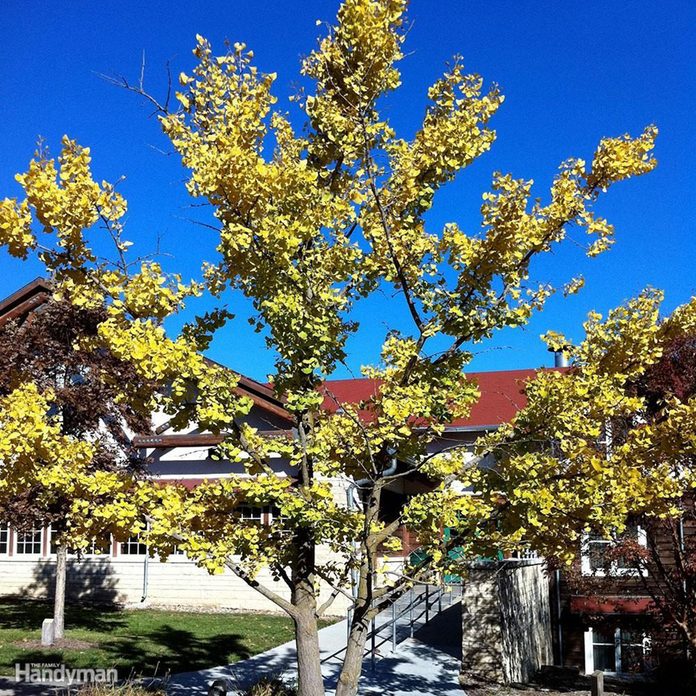
Best Trees for Backyard: Ginkgo
Grow a piece of history—ancient history! Ginkgo trees have been around for millions of years. Once thought to be extinct, they were rediscovered in the 20th century and have since become a valued landscape trees because of their beauty and ability to put up with tough, urban conditions. Their fan-shaped leaves are unique and really stand out in fall when they turn bright yellow.
Ginkgo drops its leaves all at once, so enjoy the fall foliage show while you can! Ginkgo grows slowly to 50-80 feet in height, although some cultivars are under 15 feet in mature height. Be sure to plant a male specimen, as female ginkgos drop smelly fruit. It is hardy in Zones 4-9. Take a look at these landscaping and gardening myths you shouldn’t believe.
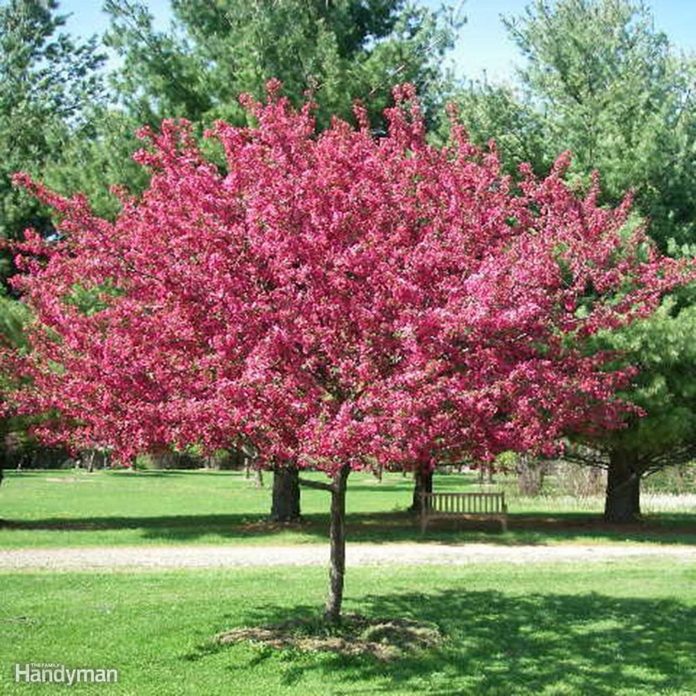
Flowering Crabapple
Flowering crabapple (Malus spp.) was once regarded as a one-trick pony: a week of bloom followed by green foliage and later messy fruit that didn’t even have the decency to offer much color. But today’s outstanding cultivars have brought a range of both flower colors (white, red, pink) and fruit colors (yellow, orange, red and burgundy).
Crabapple trees are available in a variety of shapes, including columnar and umbrella, and sizes (generally 8-20 feet tall), so they’re multiseason stars. Flowering crabapple trees are hardy in Zones 4-8. Get the kiddos outside with these garden chores for every age.
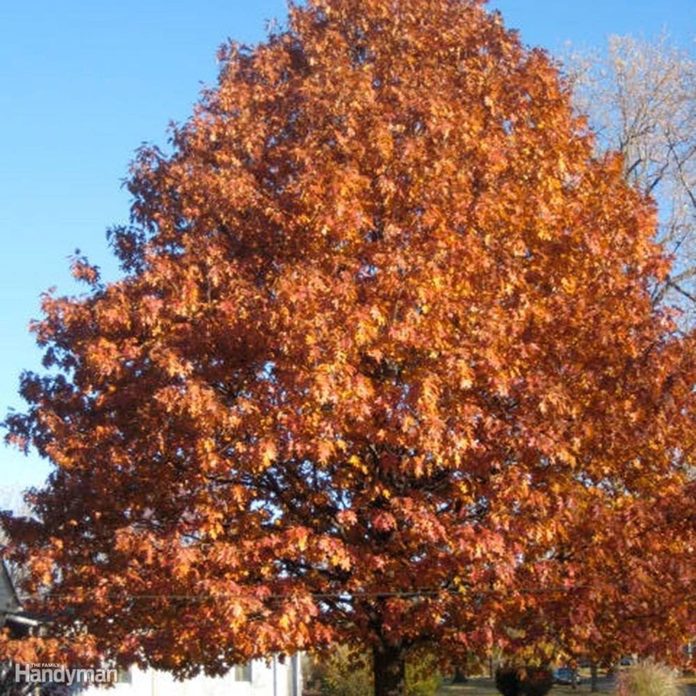
Red Oak
If you’ve got the space, why not plant America’s national tree? The oak is a symbol of strength and endurance with a mythological past. You can be a part of keeping that alive by planting one. There are hundreds of species to choose from, but landscapers seem to favor the red oak (Quercus rubra) for its quick growth, wide, rounded habit and fabulous fall color. It grows 60-75 feet tall and wide.
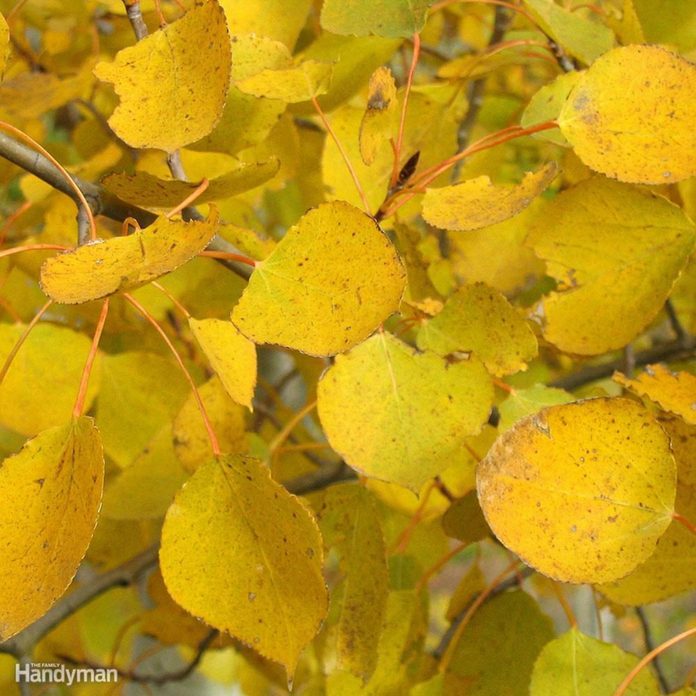
Quaking Aspen
Quaking aspen (Populus tremuloides) is also called trembling aspen because the leaves flutter in the slightest breeze. It’s a fast grower (what would you expect with a member of the poplar family?) that looks particularly pretty growing in clusters. It accepts a range of soils and rewards you with golden yellow foliage in fall and whitish bark year-round.
Quaking aspen grows 40-50 feet tall, with an oval to pyramidal shape, and is hardy in Zones 2-6. Prairie Gold (shown) is a heat-tolerant aspen. You’ll want to keep these solutions for common gardening problems in your back pocket.
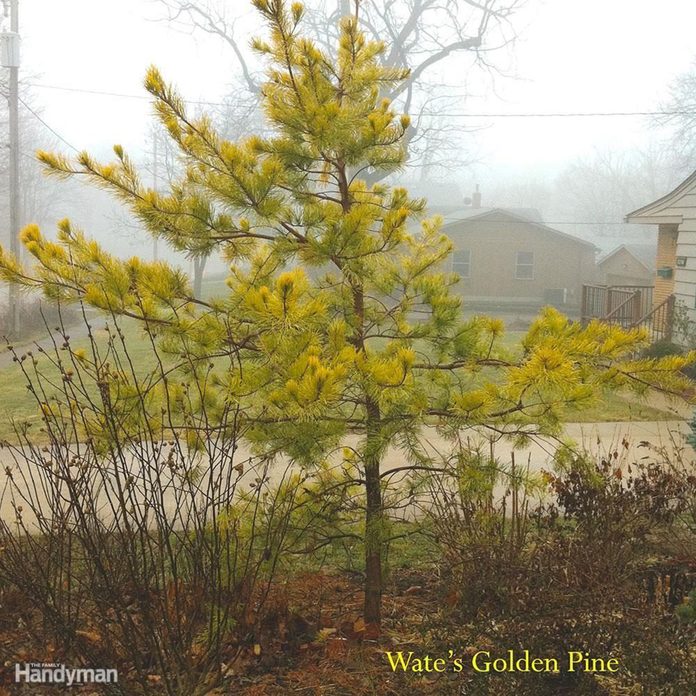
Best Trees for Backyard: Golden Pine
Evergreens are the type of tree known for adding color to the garden when you need it most—in the dead of winter. Generally, any sign of green is welcome at that point. But golden pine (Pinus Virginiana ‘Wate’s Golden’) ramps up the wintertime show with a different hue: the medium-green needles turn golden yellow. They return to green as the weather warms, but by then you’ve got other things to look at in the garden. ‘Wate’s Golden’ grows slowly to 15-20 feet tall, 10-15 feet wide, but can reach 40 feet in height. It is hardy in Zones 4-9. Keep an eye out for these invasive plants that could be in your backyard.
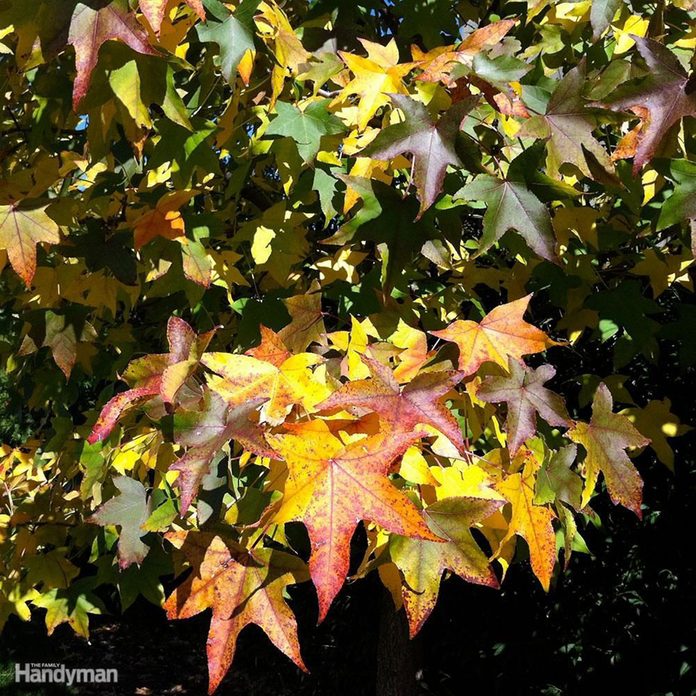
Good Front Yard Trees: Sweet Gum
Sweet gum (Liquidambar styraciflua) is easily identified by its star-shaped leaves, which turn rich hues of red, yellow and orange in fall. It also has spiny, star-shaped seedpods that drop in the winter. Some consider the ornamental seedpods a nuisance, in which case you could substitute a variety such as ‘Rotundiloba,’ which has no fruit. Sweet gum is hardy in Zones 5-9 and reaches 60-75 feet tall and 40-50 feet wide. These are the things you should never do to your yard.
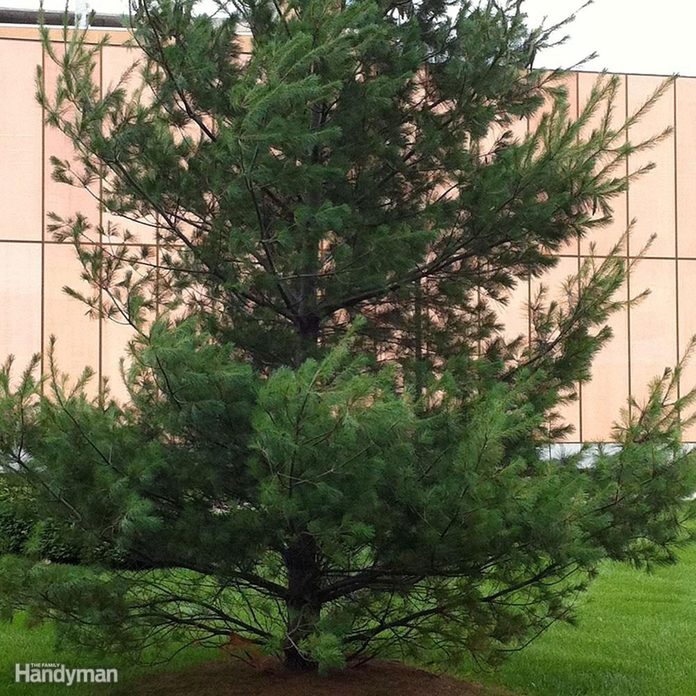
Best Trees for Backyard: Eastern White Pine
Eastern white pine (Pinus strobus) makes a welcome addition to any garden where space is available. Although the species can reach 50-80 feet tall and 20-40 feet wide, there are upright and weeping cultivars that require much less space. With either the species or a select cultivar, you’ll enjoy the fine, soft, blue-green needles. Eastern white pine trees make a great screen. Or plant one as a specimen. It self-mulches with its own needles, so there’s never a weed problem beneath mature trees. It is hardy in Zones 3-8. Next, take a look at these perennial vines your garden can’t go without.